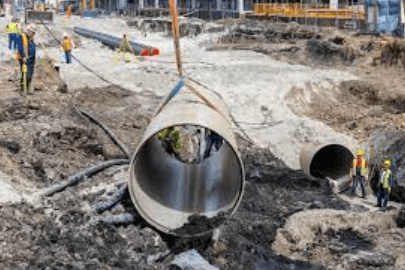Sustainability has become a cornerstone for innovation and progress in the evolving construction landscape. Among the myriad of advancements, Form Reo Pour (FRP) stands out as a beacon of sustainable construction.
This article delves into why FRP is not just a method but a movement towards a greener and more efficient future in the building industry.
The Origins of FRP
Form Reo Pour (FRP) is a fully integrated process that covers the majority of aspects of a structural concrete building project, including modular formwork systems, reinforcement cage placing, post-tensioning, concrete pumping and placement.
FRP’s roots were in the requirement for low-cost, high-strength construction – a combination of specialist technical expertise and technology.
Australia and FRP
The adoption of FRP in Australia reflects the industry’s shift towards integrating more sustainable and efficient practices in construction. It’s a method that streamlines the building process and aligns with the global movement towards environmental responsibility.
Innovative Formwork Solutions
At the heart of FRP lies the innovative approach to formwork. Traditional formwork systems, often made of timber, have been criticised for their environmental impact, including high energy use and carbon emissions during harvesting and transportation. FRP, however, revolutionises this by integrating modern materials and methods that significantly reduce the ecological footprint.
Economic and Efficient
Economic efficiency is another pillar of FRP’s rising prominence. The system’s design focuses on reducing material and labour costs, which can account for a substantial portion of total construction expenses. By optimising these aspects, FRP supports sustainable practices and presents a cost-effective solution for the industry.
Adaptable and Versatile
This flexibility was demonstrated in the diversity of FRP systems available for wall formwork and column formwork, as well as falsework, to be able to handle project-specific constraints. Buildings today present numerous intricate geometries, in addition to an abundance of unique structures, which is why such flexibility is critical in the field of construction, given that every project is different.
Technological Integration
The integration of digital technologies into FRP systems is a game-changer. With the ability to produce detailed designs and simulations, FRP allows for precise planning and execution. This enhances the quality of construction and paves the way for ‘smart’ formwork systems that can adapt and respond to real-time data.
Technological integration in Form Reo Pour (FRP) is a significant aspect that drives efficiency and innovation in the construction industry. Companies like LFCS are at the forefront, offering comprehensive packages that include solving problems around constructing more efficiently and cost-effectively, providing specialist technical expertise, innovative technology and equipment, and a highly skilled workforce.
Key Aspects of Technological Integration in FRP
- Design and Engineering Services – Utilising software design packages to produce detailed drawings, allowing clients to see exactly what they require for their projects.
- Formwork Contracting – Offering equipment, contracting, and subcontracting services, which enable structures to be completed faster, safer, and more cost-effectively.
- Associated Services – Including the supply and delivery of precast elements, reinforcement supply and installation, and concrete pumping and placement services.
As for where new technology is heading with FRP, the trends are leaning towards further automation, digitalisation, and sustainability. Integrating advanced technologies such as generative AI, robotics, 3D printing, and the Internet of Things (IoT) will enhance construction practices’ precision, efficiency, and environmental friendliness.
Read also: How Intertek PSI Solutions Can Ensure Quality and Safety in Your Supply Chain
Future Technology Trends in FRP
- Generative AI – This technology is set to transform business impact across industries, including construction, by reducing application development time and bringing powerful capabilities to nontechnical users.
- Process Automation – With the potential to automate around half of all existing work activities, next-level process automation could become more prevalent in FRP, leading to increased efficiency.
- The Future of Connectivity – Faster digital connections powered by 5G and IoT could unlock economic activity and enable more integrated and responsive FRP systems.
These advancements suggest that FRP will continue to evolve, becoming more integrated with cutting-edge technologies that streamline the construction process and contribute to the global movement towards sustainable development.
The focus will likely remain on creating smarter solutions that can adapt to the changing needs of the construction industry while minimising environmental impact.
Sustainability at Its Core
Sustainability is not just an afterthought in FRP; it’s the core philosophy. FRP is at the forefront of sustainable construction practices, from using alternative binders to exploring new materials. The system’s emphasis on reducing waste and promoting eco-friendly materials exemplifies the industry’s shift towards a more responsible future.
SUMMARY
Form Reo Pour is more than just a method; it’s a testament to the construction industry’s commitment to sustainability. As we look towards the future, FRP stands as a symbol of hope. This method builds structures and upholds the values of environmental stewardship and economic viability. It’s clear that FRP is not just the future of sustainable construction; it’s the present, leading the charge towards a greener tomorrow.


